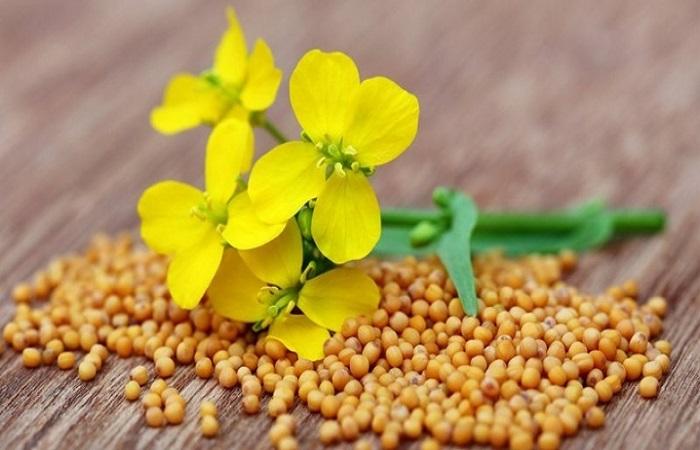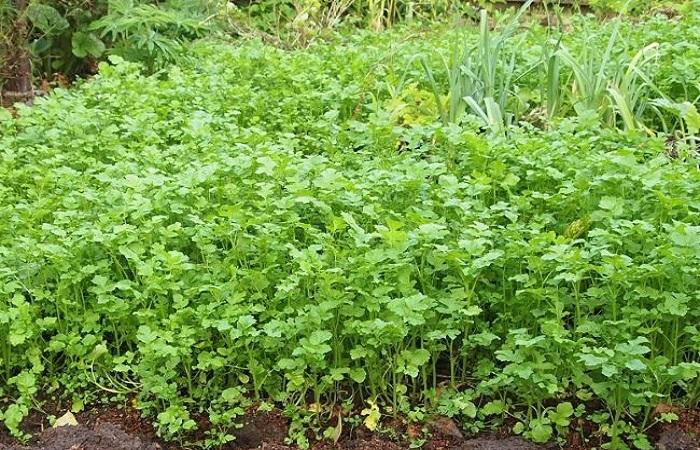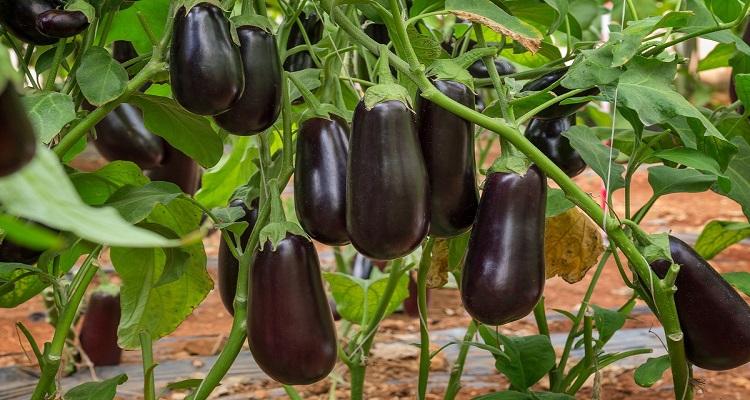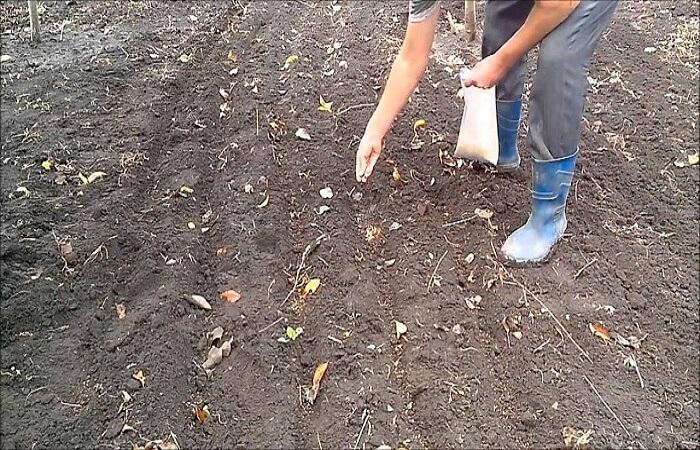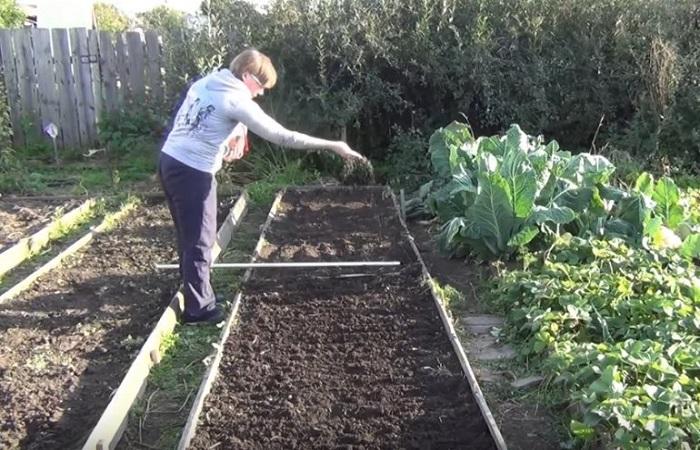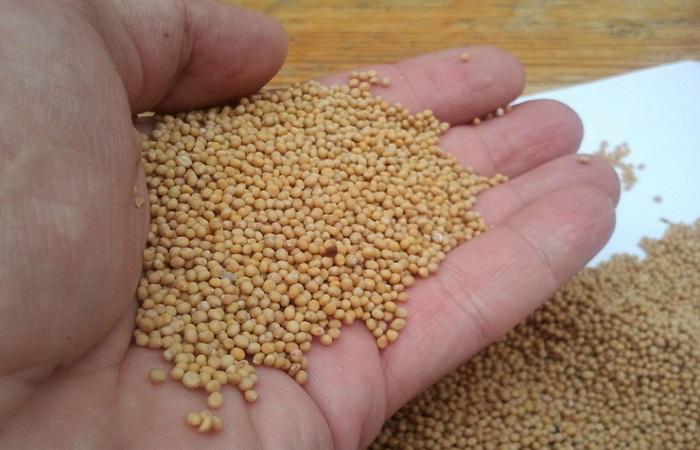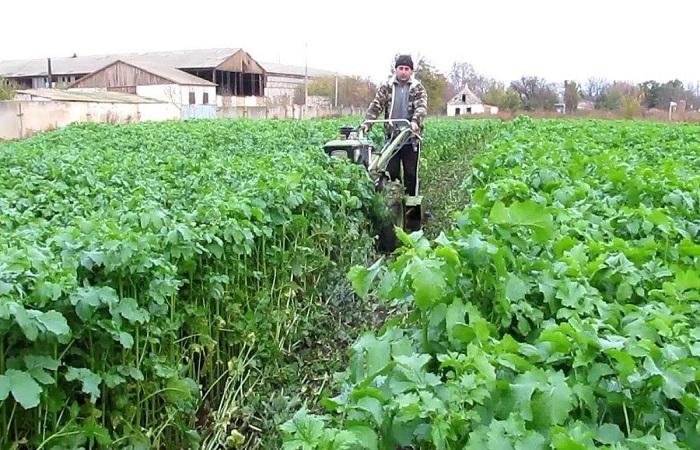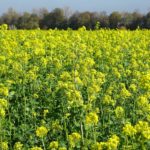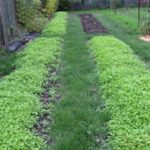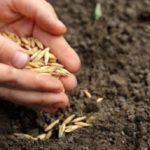Mustard belongs to the cruciferous family. It is considered one of the most popular and versatile green manures. This culture does not require specific care. It develops well and brings great benefits to the soil. The plant saturates the soil with nutrients and makes it looser. When using mustard as green manure, it is important to know when to sow and when to bury the crop. It is worth considering a number of features.
Advantages and disadvantages of mustard as green manure
To improve the quality characteristics of the soil, different types of mustard are used - black, white or Sarepta. The white variety is considered especially effective. It increases the germination and productivity parameters of cultivated plants, protects the soil from drying out, and helps get rid of weeds and pests.
The effectiveness of the plant is due to its unique chemical composition. The culture releases the following substances:
- Disinfecting components are glycosides. They help to avoid active growth of weeds and infection of the crop with scab or rot.
- Proteins and minerals. These substances help restore even the most depleted soil and make it possible to adapt it to planting seedlings.
- Acids. These substances protect the soil and tender young plants from the negative effects of ultraviolet radiation.
The main advantages of this green manure include the following:
- improving the structure of the soil - it becomes loose and absorbs moisture well;
- increasing soil resistance to blowing, leaching and displacement;
- absence of weeds on the site;
- reducing the risk of developing diseases and pest attacks;
- improvement of pollination of cultivated plants.
At the same time, mustard also has some disadvantages:
- the risk of developing pathologies that are characteristic of representatives of the cruciferous family - these include powdery mildew, clubroot, rust;
- lignification of stems after flowering begins;
- attracting birds - they peck mustard seeds and can cause damage to berries and fruits.
For what soils is mustard suitable as green manure?
The plant can be used as a fertilizer for black soil, peat or sandy soil. Mustard loves neutral soil types. It can also grow in low acidity conditions.However, it is not recommended to plant the plant in loamy, acidic or salty soil.
What and when can you plant after?
After mustard, you can plant a large number of crops. These include:
- potato;
- tomatoes;
- pepper;
- onion;
- eggplant;
- pumpkin;
- garlic;
- celery;
- strawberries;
- strawberries;
- spinach;
- zucchini;
- beets;
- beans;
- peas.
In this case, it is prohibited to plant the following after the plant:
- all types of cabbage;
- horseradish;
- watercress;
- gillyflowers;
- turnip;
- radish.
Terms and rules for planting crops
Mustard can be planted in different seasons. Depending on the timing of planting, crop care differs.
Spring sowing
The plant can be planted as early as March. In warm areas this can be done even at the end of February. It takes 30-40 days for the crop to grow leaf mass.
To carry out planting work, it is recommended to do the following:
- Clear the beds of old plant debris.
- If necessary, treat the beds with a rake or flat cutter. In spring, the soil is quite moist, so planting seeds is not difficult.
- The easiest way is to scatter mustard seeds around the area. However, it is not necessary to seal them. At the first precipitation they will go deeper into the ground.
The seeding rate per 1 acre may vary:
- when planting in beds, 400-500 grams of mustard are required;
- when placed between rows, 120-150 grams will be enough.
When the air temperature rises to +10 degrees, the first shoots will appear within 3-4 days. In this case, the soil will be covered with a continuous cover after approximately 1 month.
Summer planting
In the summer, it is permissible to plant mustard if it is necessary to remove the area from crop rotation, restore and improve its health.Planting is allowed 2 times during the season:
- For the first time, planting work should be carried out at the end of May. After 1.5 months, the plants can be embedded in the ground.
- After another 2 weeks, mustard can be planted again in the same bed. At the same time, it is important to comply with seed consumption standards.
The formation of the humus layer takes many years. To speed it up, it is worth using more effective methods. To do this, you can add compost or humus. It is also permissible to use other organic fertilizers with a powerful effect.
in autumn
To increase soil fertility, it is recommended to plant mustard in the fall immediately after harvesting. This is especially true in cool areas. Thanks to this, the crop will have time to grow before the arrival of severe cold weather. In the south, green manure should be planted before mid-November.
To carry out planting work, it is recommended to do the following:
- After harvesting, clear the beds of plant debris and weeds.
- Feed the soil with humus. For 1 square meter you should use no more than 2 buckets of fertilizer. The soil needs to be dug up and loosened with a rake.
- Scatter the seeds thickly over the entire area of the site to achieve the formation of a continuous plant cover.
- In the absence of precipitation and the soil is very dry, sprinkle a thin layer of soil on the seeds - a maximum of 1 centimeter. After which the soil needs to be moistened so that the seeds do not scatter.
Then events can develop in different ways:
- When mustard is planted in a timely manner, it has time to grow well. In this case, the plant can be mowed and left on the beds as a mulch layer.
- If the grass has not grown much and the cold weather has already arrived, the mustard should be left in the garden.
With the onset of spring, it is recommended to dig up the soil or treat it with a cultivator. Rotted mustard can be used as a complete fertilizer.
Green manure care
This undemanding plant grows well in soil with a loose structure. It grows well in the shade and in sunny beds. In good conditions, sprouts appear 3-5 days after planting. After the emergence of seedlings, the development of mustard stops.
After about a month, a dense carpet of green manure appears on the ground. After another 1 week, the mustard begins to actively bloom. In dry weather, the plant needs abundant watering. Before the flowering process begins, mustard must be mowed and the soil must be dug up.
When to mow the grass?
In order for a plant to develop in a garden, it is necessary to maintain optimal humidity parameters in the area. Greens must be mowed before flowering begins. This is done 1 month after planting. It is important to do this in a timely manner, because with the beginning of flowering the stems become coarser and the foliage acquires a rigid structure. At this time, mustard absorbs a large amount of nutrients from the soil and loses the properties of green manure.
When growing mustard in heavy soil, the cut greens need to be dug right into the ground. To do this, it is recommended to use a shovel. In looser soil, it is enough to embed the plant into the ground with an ordinary hoe. In dry weather, fed beds need to be watered systematically. This will help speed up the decomposition of the greens.
Common mistakes
The most common mistakes people make when growing green manure include:
- No watering after planting. It is forbidden to allow the soil under this plant to dry out. Therefore, it is important to water the plantings moderately but regularly.
- Neglecting the process of seeding after planting. As a result, they are pecked by birds or spread by the wind.
- Planting mustard after cabbage or radish. These cultures are considered related. Therefore, planting them nearby or alternating them is prohibited.
- Mowing too late. Green manure must be removed before the grains ripen. Otherwise, the green manure will become a weed and fill the entire garden.
- Too frequent or very rare planting. To achieve a pronounced result, you need to use 400 grams of mustard per 1 hundred square meters. It is important to distribute the grains correctly so that there are no voids.
Mustard is considered an effective plant, which is often used as green manure. In order for the crop to give the desired result, it is necessary to strictly adhere to the timing and rules of planting.

